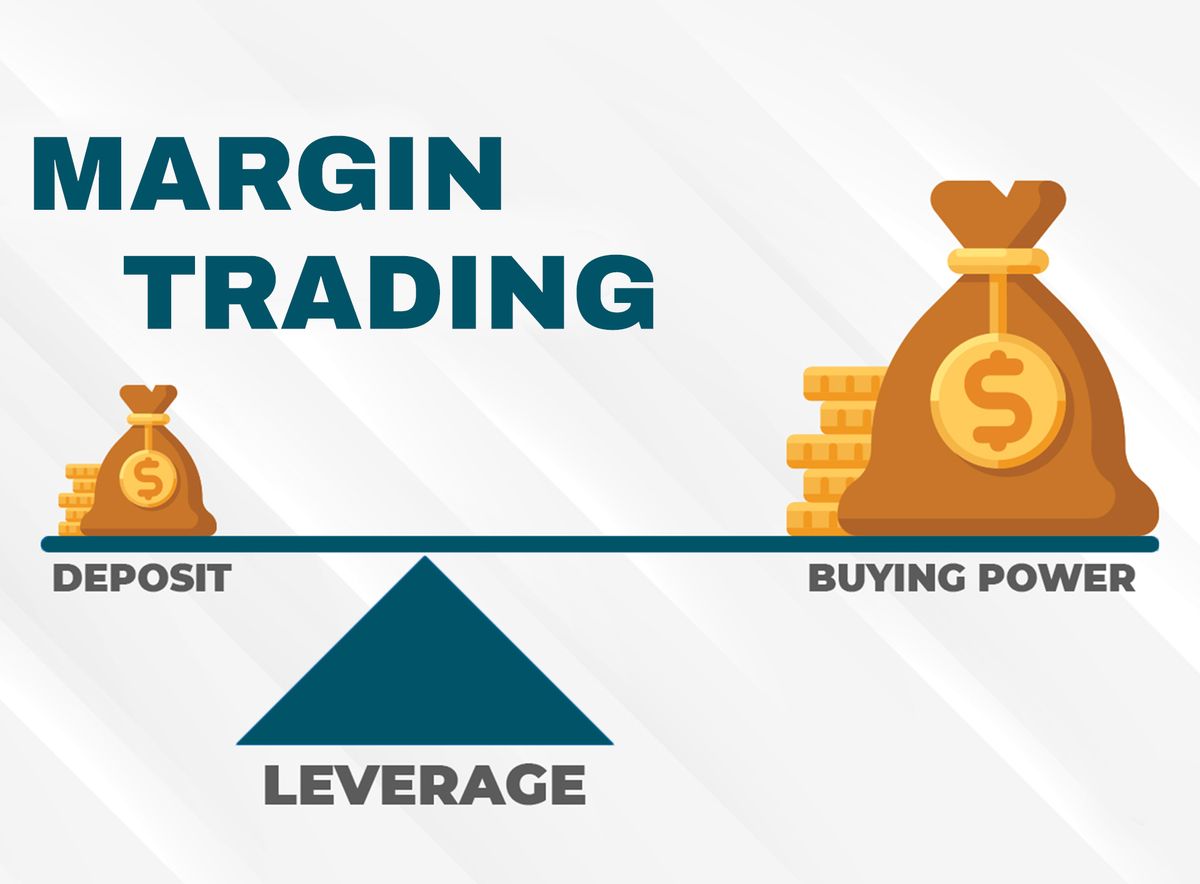How Does Margin Trading Work in Crypto?
In simple terms, margin trading is like borrowing funds to increase the size of your cryptocurrency investment.

TABLE OF CONTENTS:
1. What is Margin Trading?
2. Key Concepts
3. How Does Margin Trading Work?
4. Why Use Margin Trading?
5. How to Use Margin Trading
6. FAQs
7. Closing Thoughts
Cryptocurrency trading has evolved far beyond simple buying and selling. Amongst the several crypto innovations that we have come to know about, one of the advanced strategies that has gained popularity is margin trading.
What is Margin Trading?
In simple terms, margin trading is like borrowing funds to increase the size of your cryptocurrency investment. It allows you to trade with more money than you actually have, increasing both potential profits and losses. It's a bit like using a financial booster shot for your trades.
Imagine you have $1,000, and you believe the value of a certain cryptocurrency will increase. In a traditional trade, you could only buy $1,000 worth of that crypto. However, in margin trading, you can borrow extra funds, let's say another $1,000, to invest a total of $2,000. If the value of the cryptocurrency goes up, you make a profit on the entire $2,000, not just your initial $1,000.
However, if the market moves against you, your loss increases. If the value drops, not only will you lose your initial $1,000, but you'll also need to repay the borrowed $1,000.
Key Concepts
- Leverage: Leverage is the ratio of borrowed funds to your own investment. If you have 2x leverage, you're borrowing an amount equal to your original investment.
- Margin: Margin is the amount of money you must deposit to borrow funds. It's typically a percentage of your entire trade value, and the specific amount needed depends on how much you're borrowing (leverage).
- Liquidation: If the losses on your investment come close to the amount you borrowed, the exchange might sell your assets to get back the borrowed money. It's important to be aware of this risk.
- Long and Short Positions: Going long means betting the price will rise, while going short means betting it will fall. Margin trading allows you to profit in both scenarios.
How Does Margin Trading Work?
1. Borrowing Funds: Just like taking a loan, in margin trading, you borrow funds to increase your trading position.
2. Leverage Ratios: Leverage ratios determine how much you can borrow relative to your initial investment. For example, if you have $1,000 and use 2x leverage, you can trade with $2,000.
3. Risk Management: While margin trading offers increased potential returns, it's crucial to manage risk. Set stop-loss orders to limit potential losses, preventing your borrowed funds from wiping out your entire account.
4. Interest Rates: Borrowing funds in margin trading attracts interest rates.
5. Liquidation: If the market moves against you, there's a risk of liquidation, where your borrowed funds are automatically repaid. Proper risk management helps prevent liquidation and preserve your trading capital.
Why Use Margin Trading?
1. Amplified Profits: With margin trading, you can take advantage of changes in the market to possibly earn extra money.
2. Access to More Assets: By borrowing funds, you can access a more extensive range of assets and diversify your portfolio.
3. Flexible Trading Strategies: Margin trading provides flexibility in executing various trading strategies, from day trading to long-term investments.
4. Market Efficiency: Traders can take advantage of short-term price fluctuations and periods when the market is not working efficiently.
How to Use Margin Trading
Margin trading in the crypto world can be a powerful tool if used wisely, but it's crucial to understand the ins and outs before diving in. Here's a step-by-step guide on how to use margin trading effectively:
1. Educate Yourself: Learn the basic terms before you start margin trading. Know important terms like leverage, margin, and liquidation. It's like understanding how a car works before driving.
2. Choose a Reputable Platform: Opt for a reliable trading platform that offers margin trading services. Ensure the platform has a user-friendly interface, robust security features, and a range of cryptocurrencies to trade.
3. Create an Account: Sign up on the platform and complete the necessary verification process. This usually involves providing identification documents to comply with regulatory standards.
4. Deposit Funds: Fund your trading account with an amount you are willing to risk. Remember, margin trading increases both gains and losses, so only invest what you can afford to lose.
5. Select the Right Cryptocurrency Pair: Choose the cryptocurrency pair you want to trade. Conduct thorough research on market trends, news, and historical data to make informed predictions.
6. Set Leverage Level: Decide on the leverage level based on your risk tolerance. Leverage increases your exposure to the market, but it also inflates potential losses. Beginners should start with lower leverage until they gain confidence.
7. Place a Trade: Once you've chosen the cryptocurrency, set the amount, and adjusted the leverage, it's time to place your trade. Keep an eye on the order type – whether it's a market order for immediate execution or a limit order to buy or sell at a specific price.
8. Monitor Your Position: Constantly monitor your trade. Crypto markets are highly unstable, and prices can change rapidly. Set stop-loss orders to limit potential losses and take-profit orders to secure profits at a fixed level.
9. Understand Liquidation: Be aware of the liquidation level, that is, the price at which your position will be automatically closed to prevent further losses. It's a safety net to ensure you don't lose more than your initial investment.
10. Practice Risk Management: The key to successful margin trading lies in managing risk. Diversify your portfolio, avoid over-leveraging, and don't let emotions guide your decisions. Stick to a well-thought-out trading strategy.
FAQs
Q1. What is the minimum amount required for margin trading?
A1. Minimum amounts vary by exchange and can range from a few dollars to a few hundred.
Q2. How is the interest on borrowed funds calculated?
A2. Interest rates are usually expressed annually and can vary. Always check with your exchange for specific rates.
Q3. Can I lose more than my initial investment?
A3. Yes, that's the risk of margin trading. Losses can surpass your initial investment.
Q4. Is margin trading suitable for beginners?
A4. It's recommended for experienced traders due to its complexities and risks.
Q5. What is a margin call?
A5. A margin call occurs when your losses approach the borrowed amount, and the exchange asks for additional funds or liquidates your position.
Q6. Are there tax implications for margin trading profits?
A6. Tax regulations vary by jurisdiction. Consult a tax professional to understand the rules in your area.
Q7. Can I use any cryptocurrency for margin trading?
A7. It depends on the exchange. Some offer margin trading for a wide range of cryptocurrencies, while others may have limited options.
Q8. How do I choose the right leverage?
A8. Consider your risk tolerance. Higher leverage increases potential profits but also the risk of significant losses.
Q9. Can I withdraw my funds while margin trading?
A9. Withdrawing funds may affect your margin level. Check the exchange's rules on this.
Q10. What precautions should I take before margin trading?
A10. Educate yourself, start with a small investment, use low leverage, and be aware of the potential risks and rewards.
Closing Thoughts
Getting into margin trading with cryptocurrency might seem tricky, but if you understand it well, it can help you make more money.
Margin trading lets you borrow money to increase your trades and potentially make more profit. But you should also be careful because it also raises the risk of losing more money.
You need to understand leverage, manage risks, and choose the right platform to be off to a good start. Even though the chance for more profit is exciting, being careful and knowing what you're doing is really important for success.
Remember, knowing a lot is your best tool in the unpredictable world of crypto trading. Stay informed, trade wisely, and be aware of the risks. Happy trading!
Disclaimer: This article was written by the writer to provide guidance and understanding of cryptocurrency trading. It is not an exhaustive article and should not be taken as financial advice. Obiex will not be held liable for your investment decisions.




